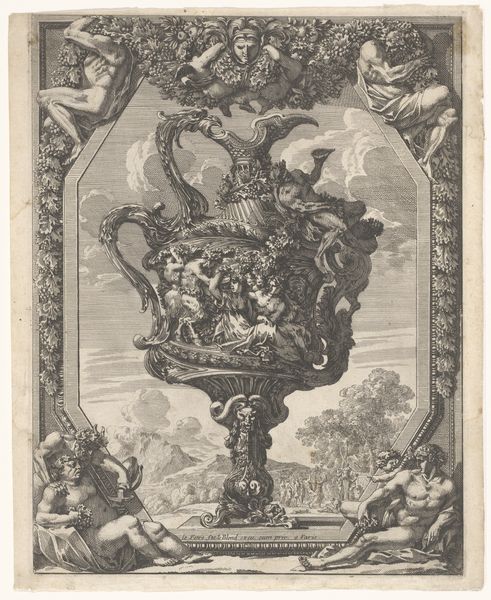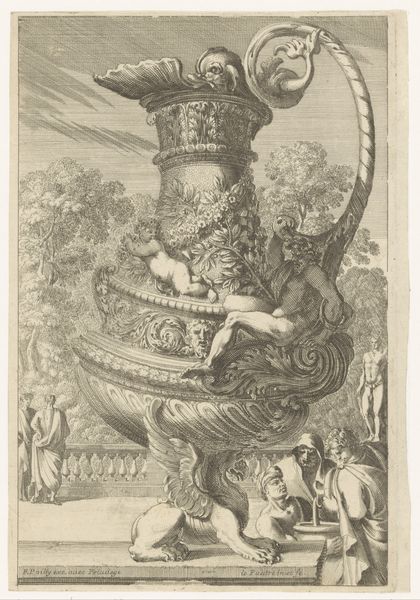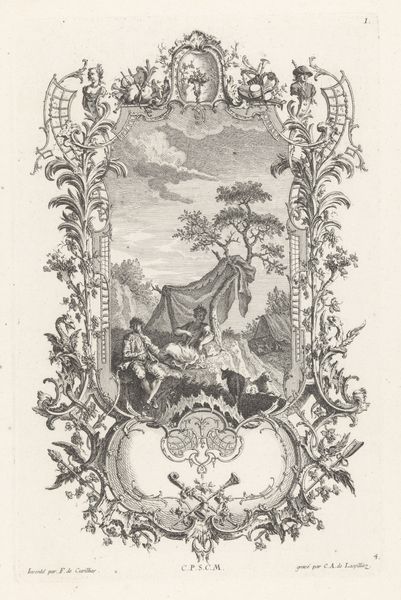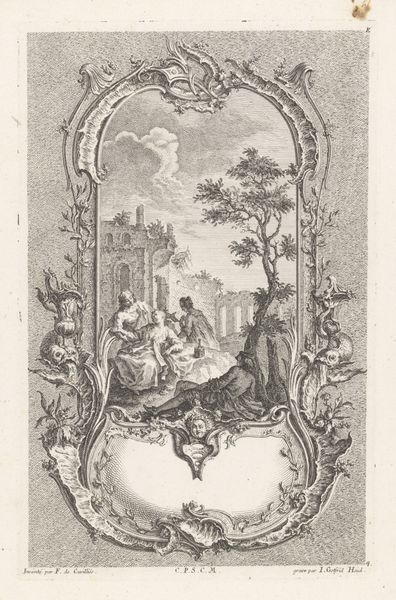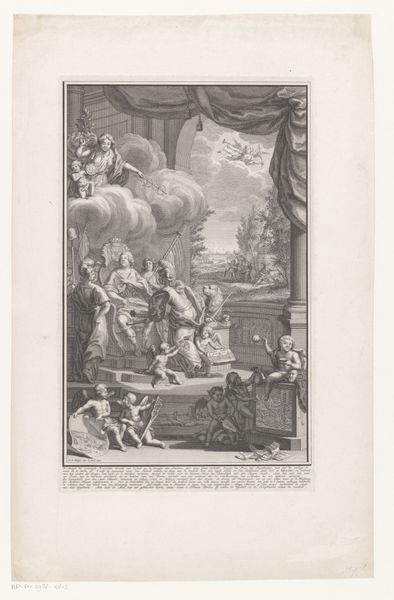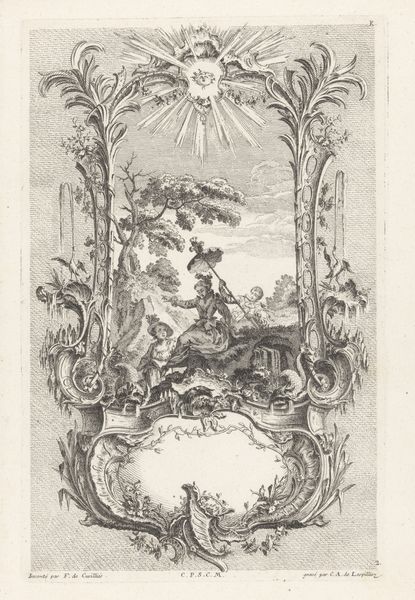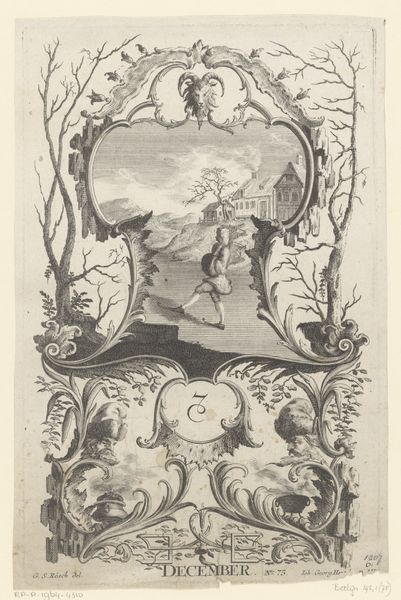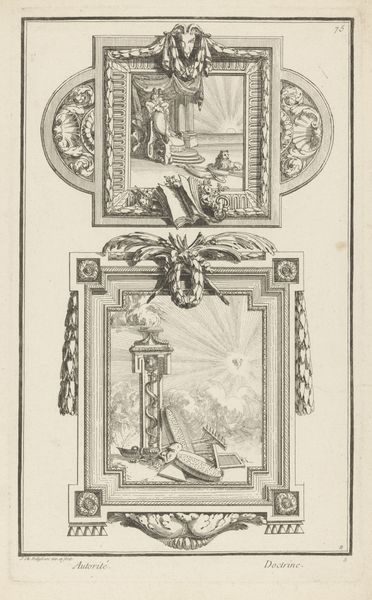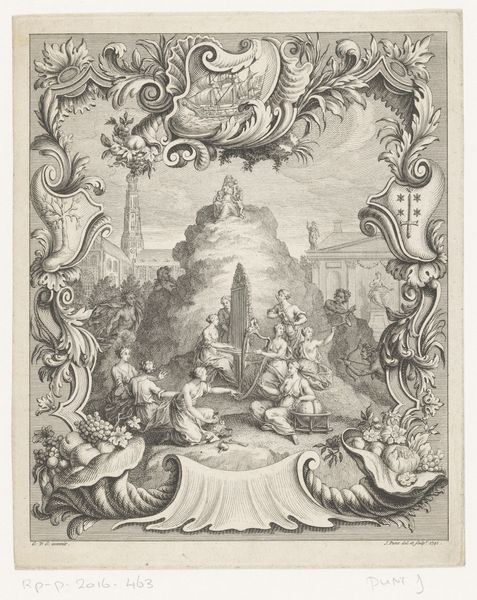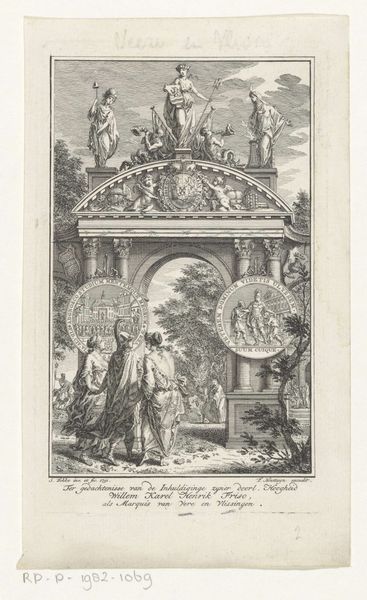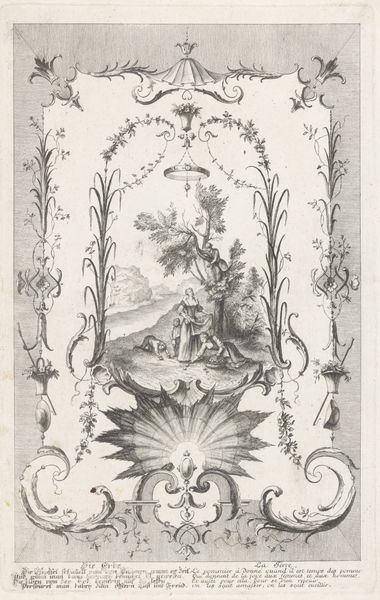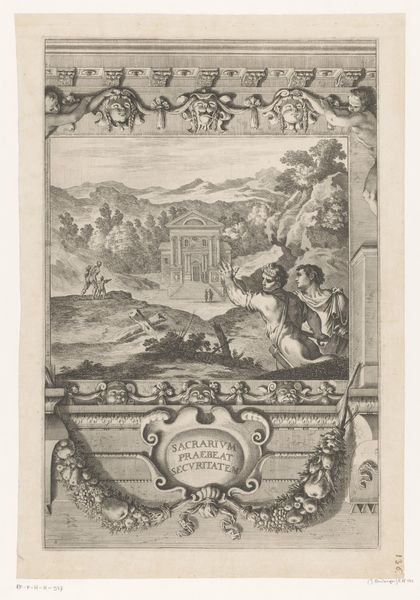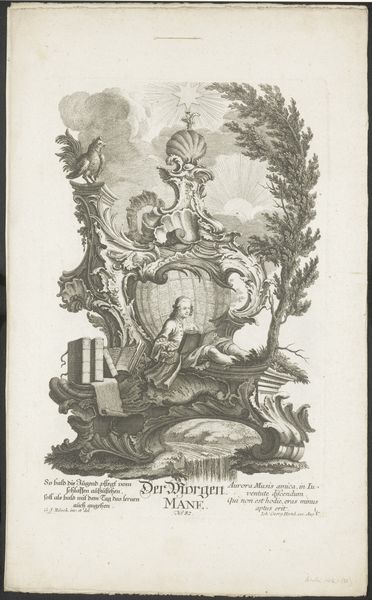
print, engraving
#
allegory
#
baroque
# print
#
landscape
#
figuration
#
line
#
engraving
Dimensions: height 363 mm, width 239 mm
Copyright: Rijks Museum: Open Domain
Curator: This engraving, "Halve koepel en obelisk," dates back to 1745. It's the work of Carl Albert von Lespilliez and is currently held here at the Rijksmuseum. There's a remarkable combination of Baroque style and precise line work. What’s your initial take? Editor: My first impression is... dramatic. The composition is busy, almost chaotic, yet somehow balanced. It's like a dream, filled with allegorical figures and architectural fragments, hinting at something grand but ultimately fragmented. Curator: Indeed. The use of allegory is central here. The print depicts a complex scene: we see a semi-dome with a classical statue beneath, topped by an obelisk surrounded by cherubs and figures, all bathed in light. These aren't just decorative elements; they're laden with symbolic meaning. Editor: Symbolism dripping from every corner, really. It’s almost overwhelming. Is this meant to evoke power? Divine right, perhaps? That statue looks rather heroic. And what about that obelisk, piercing the sky like that? A tad phallic, no? Curator: Precisely! The obelisk traditionally represents power, ambition, even a connection to the divine. The statue, likely representing a ruler or ideal figure, stands beneath as if supported by this divine right or authority. Lespilliez masterfully layers these symbols to communicate a particular political or philosophical message. Consider the broader context, 18th-century Europe was rife with political upheaval and philosophical debates about the role of monarchy and governance. Editor: Okay, so power structures are being propped up by these ethereal symbols. The cherubs, the divine light, it all feeds into this narrative. It's unsettling, isn’t it? I mean, such a beautiful, intricate execution, used in the service of something... perhaps questionable by today’s standards. Curator: And I think you hit upon something key – how do we interpret such imagery today, knowing the historical power dynamics embedded within the artwork? It forces us to reckon with art's role in reinforcing or challenging social hierarchies. Editor: Yeah, well, I guess art should always be stirring up some feelings, positive or not! I think that light is cool too. That’s one fancy lens flare before lens flares were a thing. Curator: A fascinating piece to consider through a contemporary lens. Editor: Indeed. Gives you something to think about. A bit dizzying, really, but intriguing.
Comments
No comments
Be the first to comment and join the conversation on the ultimate creative platform.
